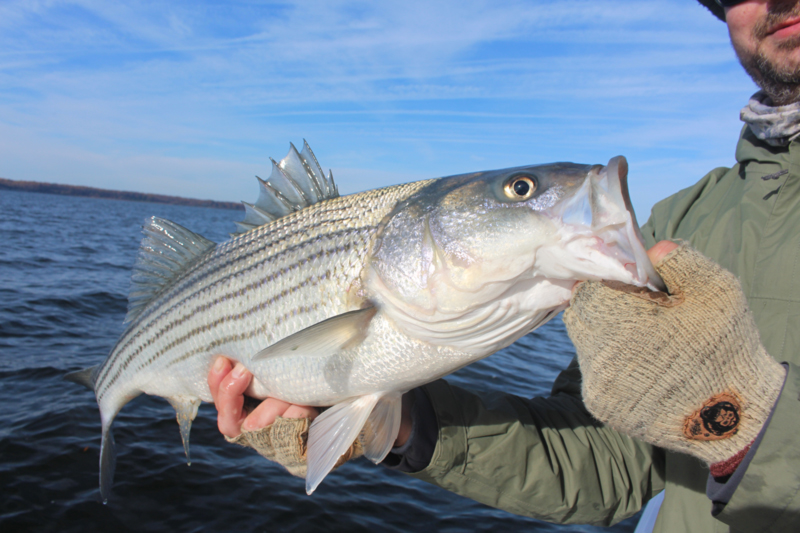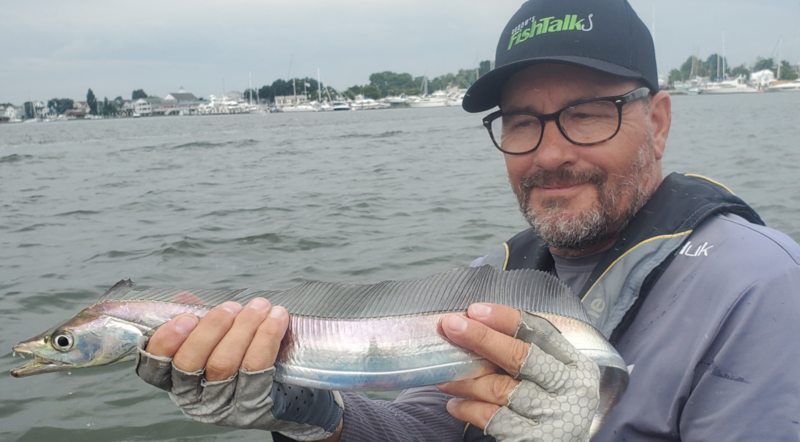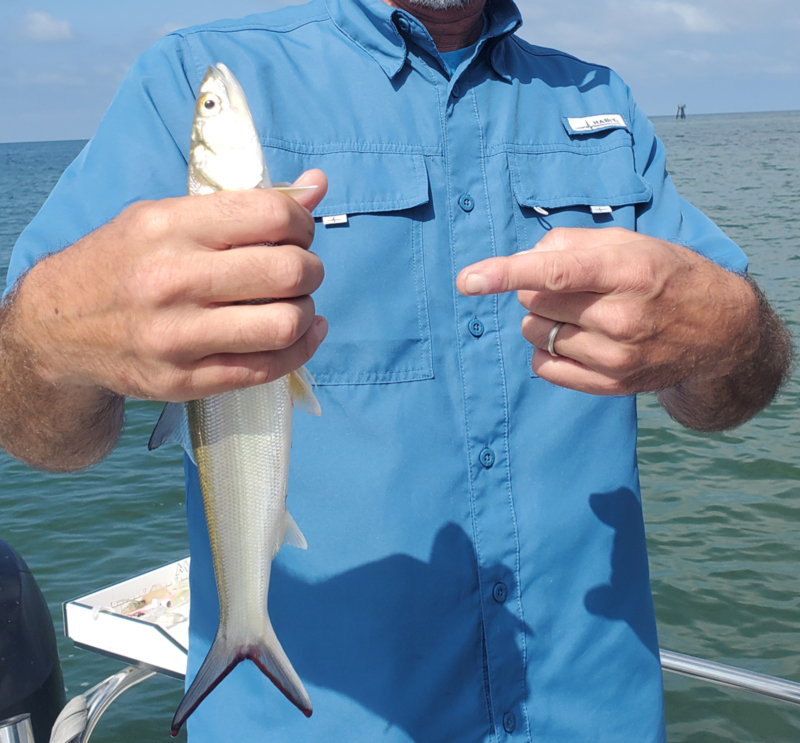I’m not a scientist and I don’t play one on TV, but no sentient Chesapeake Bay fishing finaddict could fail to recognize that massive changes are taking place on the waterway dearest to our hearts. Call it climate change, call it global warming, call it natural climate fluctuations, call it whatever the heck you want — today’s Chesapeake Bay is not the same one of yesterday, and tomorrow’s is likely to differ even more.

Since I’ve already admitted I’m not a scientist, let’s get the ball rolling by looking at what the actual geekthorities have to say. All the way back in 2014 the US Geological Survey reported that the streams feeding the Bay had an overall temperature increase of 2.5 degrees Fahrenheit since 1960 (Rice and Jastram, “Climactic Change”). A year later the University of Maryland’s Center for Environmental Science (UMCES) found that Bay water temperatures had increased an average of 1.2 degrees per decade since the 1980s (Ding and Elmore, “Remote Sensing of Environment”). And in 2021 William and Mary’s Virginia Institute of Marine Science (VIMS) released a study covering three decades of change showing not only increasing Bay temperatures due to atmospheric conditions, but also the effect of oceanic warming along Virginia’s coast (Hinson, Freidrichs, and St-Laurent, “Journal of the American Water Resource Association”).
Trying to argue against or ignore scientifical studies like these is akin to a three-year-old, fingers planted firmly in ears, yelling “nya nya nya, I can’t hear you.” But those of us who have been fishing the Bay for 50-plus years won’t be tempted to. We might not be brainiacs, but the changes in our fisheries are obvious.
Each of these studies are quick to point out that warming trends in Bay waters aren’t solely due to climate change. Urbanization also has a significant impact as runoff passes over impervious surfaces like asphalt and concrete, getting a nice temperature boost before it reaches the Bay. And water-cooled power generation stations may be responsible for a bit of the blame. That said, computer modeling in the VIMS study put 90 percent of the onus on atmospheric conditions. The same study noted that seasonal variations are significant, with summer water temperatures rising over three times higher than winter water temps.
Now let’s juxtapose that environmental intel against a few observable trends. In the past decade or so, striped bass have more or less disappeared from much of the southern Chesapeake during the summer months. They’ve even become sparse in many parts of the Middle Bay in more recent years, and “squeezed” by environmental conditions including excessive temperature and areas of low oxygen into small, concentrated schools north of the Chesapeake Bay Bridge.
In the past five years white shrimp have entered the Bay in unheard-of numbers and have been regularly found all the way up into Maryland waters. Their population has grown so strong in Virginia that the state recently opened an experimental shrimp fishery; the eight fishermen who participated in 2020 harvested an eye-opening 418,616 pounds.

Cutlass fish, once an anomaly even in southern sections of the Bay, are now dominant in some areas and get caught as far north as the Severn. Pompano and lady fish show up in the Choptank and the Tangier. Cobia are a regular target not only in Virginia, but also in Maryland waters. The list goes on and on.
So, what do all of these changes mean to we anglers?
Sad as it is to say, as opposed to a short-term dip in the striped bass population, we may be facing a longer-term decline of this fish as the dominant species in the Chesapeake Bay. This is certainly an arguable point and it’s not an assertion that the rockfish are doomed, but the possibility is made clear by a number of facts beyond their recent population drop. For three years running Maryland’s striped bass Young of Year index has failed to reach even one half of the long-term average; you can’t run from Sandy Point to Love Point without seeing dozens of dead rockfish floating around for much of the summer (including when the fishing season was closed this past July); and the average July water temperature in the Upper Bay (81.9 degrees according to Maryland DNR’s Eyes on the Bay) is now pushing up against the striped bass’s tolerance range, generally considered to be about 84 degrees. Remember, those water temps were averages — there were many days this past July when surface temps exceeded 90 degrees.
Let’s also remember that if rockfish were replaced as the Bay’s most prolific sportfish, it wouldn’t be the first time. Those who have been fishing the Chesapeake since the 70s and 80s will have no trouble recalling the days when bluefish were the hands-down dominant finfish.

On the flip side of the coin, nature always has a way of finding its own balance and in recent years as the rockfish’s numbers have dropped, it seems we’re already beginning to see other species slide in to fill the ecological void. Every season is different, but consider this: north of the Bay Bridge, would it sound crazy to argue that blue catfish are already winning the battle over biomass? Ten years ago they were more or less unheard-of, five years ago five- and 10-pounders were all over the place, and this past fall anglers looking for rockfish from the Susquehanna Flats to the Pooles Island lumps caught one after the next in the 20- to 30-pound range.
Change is afoot; there can be no doubt. Actually, when you look back over the long-term change has always been present, though exactly what that change is differs through the years. Weakfish and croaker have come and gone in dominant populations twice in the last 50 years. Flounder have been absent, plentiful, and absent again. As new generations of anglers enter the fishery, what seems “normal” to the angling community writ large changes. To someone who began fishing in the late 90s or early this century, rockfish numbers and sizes have declined in a precipitous fashion. Yet to someone who began fishing in the 70s or 80s there are three times as many stripers around as there were for decades at a time.
Through all of these changes there’s been one constant feature that no one can deny: poor water quality. I’ve seen it improve through stages of my life only to realize that what I saw as “better,” my father’s generation would have seen as horrific. No doubt, generations before his would be utterly aghast at our over-nutrified, cloudy, oxygen-deprived algae farm. It would seem that all the work done by environmental organizations and government agencies over the past few decades has amounted to more or less holding the line as development and populations continue to grow and the climate continues to change.
As one fishery slips, another moves in to take its place. Every battle we anglers fight over regulations and allocations, be it over rockfish or oysters, does have an impact. And though our fisheries are changing one thing remains true: the Chesapeake Bay remains one of the most gorgeous and productive bodies of water on the face of the planet. Fishing here engenders a love of the place and a love of the planet. And no matter how our angling opportunities shift in the coming years, you can be sure that we’ll all still be out there fishing.
-By Lenny Rudow
Next month in Fisheries Issues Part II, we’ll take a deep dive into the Chesapeake Bay striped bass population in specific.